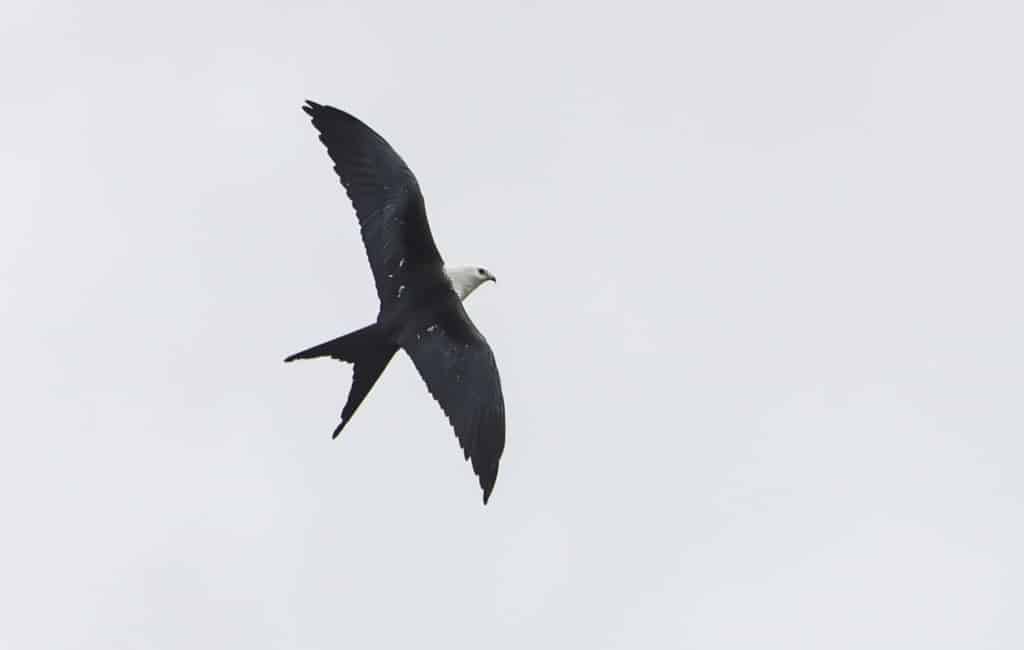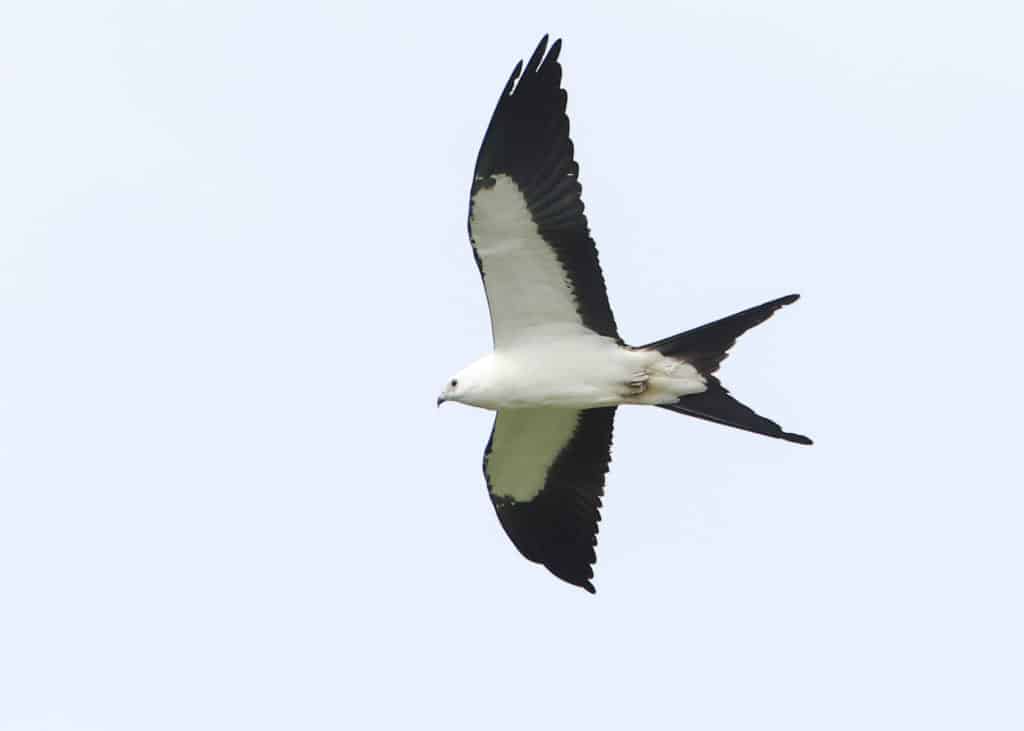Creature Feature
A Beautiful Gliding Visitor
By Wayne Bierbaum
Although it seems that I am always out capturing wildlife photography, I tend to be too busy to spend more than one morning or so a week “traveling”. I tend to go on trips by myself or with my wife. When I think about where to go, I try to avoid chasing rare species. I do get alerts on my phone for sightings of unusual species but then I get my “sour grapes” thoughts. The animal would have moved on or there are too many people crowding it. I did go see the painted bunting at Great Falls but only as a secondary trip because I was in the neighborhood.
This weekend, I went to see an exceptional animal: a swallow-tailed kite. It had been seen consistently flying over a grasshopper infested soybean field on the Eastern Shore. I had already decided, if the area was crowded or the animal did not show up quickly, I would leave.
So, on Saturday morning I took the drive with my wife (I promised her a good breakfast and pleasant woods walk). At the area where the bird had been spotted were five people with binoculars and cameras waiting for an appearance. Since I had heard that some people waited two and a half hours for it to show, after 15 minutes and no show, I left for breakfast.
After breakfast, I drove back and the same five people were packing up to leave and I was told I had missed the bird by five minutes and rain was coming. Discouraged, I scanned the tree line but didn’t see it.
As I started walking back to my car though, I caught a glimpse of the bird about a half mile away.
The swallow-tailed kite is one of the most graceful fliers in the animal kingdom. They do almost everything in the air. They feed on insects, fledgling birds, lizards, snakes, small mammals, bats—all of which they snatch in flight, not landing at all. They feed themselves while flying. The male will pass food to the female in flight, both for herself or for a growing family.
The elegant kites are graceful. They possess large pointed wings and a deeply forked tail that spreads into a wide rudder for quick turning. The wings and tail are almost black on top and white with black edges when viewed from underneath. Their chest and head are bright white with starkly dark eyes.
They nest at the top of tall trees like loblolly pines and cypress trees. Most of the U.S. birds fly to South America for the winter. Individuals that breed from Mexico to South America may be resident (nonmigratory) or migrate shorter distances.
I went to see the kite not just because of its grace but because of its rarity. That bird was probably the only in Maryland that day. They are common in South America and fairly common in the southeastern United States below North Carolina. Their U.S. numbers are less than 8 percent of 1970 levels but the reasons are unclear. They are affected by the draining of wetlands and clearing of pine forests. Also, they avoid dense human population areas.
I was able to see the bird from about a block away and watched it catch and eat a large dragonfly. It also started harassing a trio of crows. One of the crows then tried to chase the kite but the kite was much faster and performed rapid twists and turns that made the crow turn around.
It was a nice trip and I was pleased that there were only a few people around. Chasing a rare species just isn’t for me.


